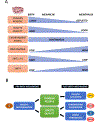Sirtuins in female meiosis and in reproductive longevity
- PMID: 33184962
- PMCID: PMC7775317
- DOI: 10.1002/mrd.23437
Sirtuins in female meiosis and in reproductive longevity
Abstract
Transmission of genetic material through high-quality gametes to progeny requires accurate homologous chromosome recombination and segregation during meiosis. A failure to accomplish these processes can have major consequences in reproductive health, including infertility, and development disorders in offspring. Sirtuins, a family of NAD+ -dependent protein deacetylases and ADP-ribosyltransferases, play key roles in genome maintenance, metabolism, and aging. In recent years, Sirtuins have emerged as regulators of several reproductive processes and interventions aiming to target Sirtuin activity are of great interest in the reproductive biology field. Sirtuins are pivotal to protect germ cells against oxidative stress, a major determinant influencing ovarian aging and the quality of gametes. Sirtuins also safeguard the integrity of the genome through epigenetic programs required for regulating gene repression, DNA repair, and chromosome segregation, among others. Although these functions are relatively well characterized in many somatic tissues, how they contribute to reproductive functions is not well understood. This review summarizes our current knowledge on the role of Sirtuins in female reproductive systems and discusses the underlying molecular pathways. In addition, we highlight the importance of Sirtuins as antiaging factors in the ovary and summarize current preclinical efforts to identify treatments to extend female reproductive longevity.
Keywords: Sirtuin; female reproduction; oocyte; ovary; reproductive longevity.
© 2020 Wiley Periodicals LLC.
Conflict of interest statement
Conflict of interest
The authors have no conflicts of interest to declare.
Figures


References
Publication types
MeSH terms
Substances
Grants and funding
LinkOut - more resources
Full Text Sources
Medical

